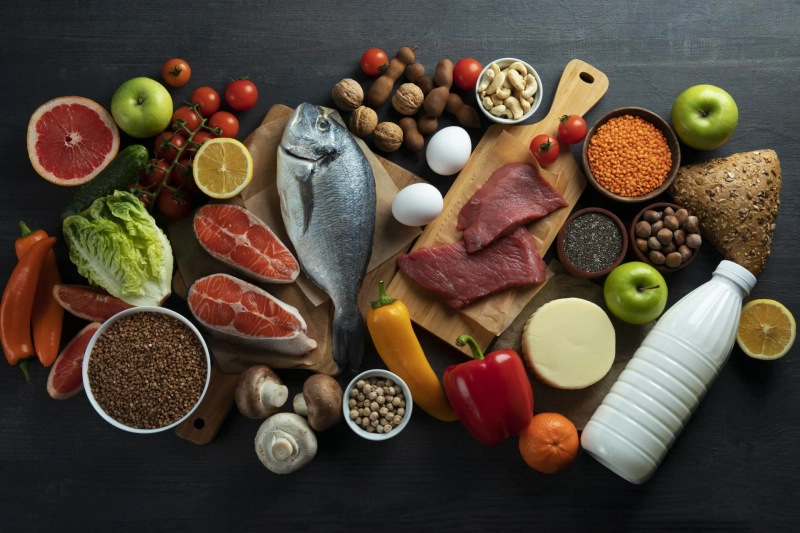Introduction
Counting calories can feel like a chore, and when the numbers don’t deliver the scale or mirror changes you expect, it’s downright frustrating. The problem isn’t always a lack of effort; more often, it’s relying on generic “eat 2,000 calories” advice that ignores your body’s unique engine. Total Daily Energy Expenditure (TDEE) cuts through the confusion by revealing exactly how many calories you burn each day. Once you know that number, you can fine-tune intake to lose fat, build muscle, or stay perfectly balanced. In this 1,000-word guide, you’ll discover how a TDEE calculator works, why it outperforms traditional food logging, and how to put its insights into practice for smarter calorie tracking.
1. TDEE 101: The Four Pillars of Daily Calorie Burn
TDEE bundles every calorie your body spends in 24 hours into one actionable figure. It combines:
ComponentWhat It CoversTypical ShareBasal Metabolic Rate (BMR)Heartbeat, breathing, organ repair—your “idle speed”60 – 70 %Thermic Effect of Food (TEF)Energy to digest and absorb nutrients5 – 10 %Non-Exercise Activity Thermogenesis (NEAT)Fidgeting, walking the dog, household chores10 – 20 %Exercise Activity Thermogenesis (EAT)Lifting, running, sports practice5 – 15 %
Because these pillars shift with body size, muscle mass, job demands, and workout load, two people of the same height and weight can have TDEEs that differ by 500 calories or more—enough to sabotage a diet if you rely on cookie-cutter plans.
2. Why “Calorie Budgets” Beat “Calorie Counting”
Traditional calorie counting logs everything you eat but never tells you what the numbers mean. A TDEE calculator flips the process:
- Calculate your burn first (your “budget”).
- Spend those calories on food in line with your goal.
- Audit progress and adjust the budget as your body changes.
This budget-first approach eliminates the guesswork of “How low is too low?” or “Am I eating enough to grow?”—so every log entry has context.
3. How to Use a TDEE Calculator Step by Step
Step 1 — Gather accurate data
- Morning body weight (preferably averaged over three days)
- Height, age, biological sex
- Honest activity level (see next section)
Step 2 — Select the right activity multiplier
Lifestyle SnapshotMultiplierDesk job, little exercise1.2Light training 1–3 × week1.375Moderate training 3–5 × week1.55Hard training 6–7 × week/manual labor1.725Elite athlete—twice-daily sessions1.9
Step 3 — Interpret the result
The output is your maintenance calorie target—eat this amount and weight should stay within ±1 lb (0.5 kg) over two weeks.
Step 4 — Dial in for goals
- Fat loss: TDEE – 10 % to 25 %
- Muscle gain: TDEE + 5 % to 15 %
- Maintenance: stay within ±5 %
Step 5 — Set macro ratios (optional but recommended)
- Protein: 1.6 – 2.2 g/kg body weight to protect muscle
- Fats: 20 – 30 % of total calories for hormones
- Carbs: fill the remaining calories for energy
4. Real-World Scenarios: Lose, Gain, Maintain
a) Fat-Loss Example
- Stats: 28-year-old woman, 68 kg, 165 cm, trains 4 × week
- TDEE: 2,150 cal
- Deficit Target (-20 %): 2,150 × 0.8 ≈ 1,720 cal
- Protein Goal: 68 kg × 2 g = 136 g (544 cal)
- Fats (25 %): 430 cal ≈ 48 g
- Carbs: 1,720 – (544 + 430) = 746 cal ≈ 187 g
Expected pace: 0.5–0.8 kg (1–1.5 lb) fat loss per week.
b) Muscle-Gain Example
- Stats: 22-year-old man, 75 kg, 180 cm, lifts 5 × week
- TDEE: 2,800 cal
- Surplus Target (+10 %): 3,080 cal
- Protein Goal: 75 kg × 2 g = 150 g (600 cal)
- Fats (25 %): 770 cal ≈ 86 g
- Carbs: 3,080 – 1,370 cal = 1,710 cal ≈ 428 g
Expected pace: 0.25–0.5 kg (0.5–1 lb) gain per week, mostly lean mass with progressive training.
c) Maintenance Example
- Stats: 45-year-old woman, 60 kg, 160 cm, daily yoga & walks
- TDEE: 1,900 cal
- Calorie Target: 1,900 cal
- Macro Split (30 P / 40 C / 30 F):
- Protein: 570 cal ≈ 143 g
- Carbs: 760 cal ≈ 190 g
- Fats: 570 cal ≈ 63 g
Goal: Maintain weight while supporting energy for lifestyle.
5. Tracking Smarter, Not Harder
Use Tools That Sync
Pair your TDEE target with a food-logging app that imports recipes, scans bar-codes, and saves frequent meals. Automation reduces slip-ups and mental fatigue.
Monitor Trends, Not Single Days
Weight fluctuates with sodium, hormonal cycles, and glycogen storage. Average your scale readings over seven days; adjust calories only if the trend stalls for two consecutive weeks.
Recalculate Regularly
A 5 % change in body weight or a new training block warrants a fresh TDEE estimate. As you get leaner, metabolism often slows; as you build muscle, it speeds up.
Combine with Wearables (Carefully)
Smartwatches estimate daily burn, but they often overstate workout calories. Trust the TDEE calculator as your anchor and use wearable data as a directional nudge—not gospel.
6. Common Pitfalls—and How to Avoid Them
- Overestimating Activity Level
- Selecting “very active” when you train three times weekly can overshoot by 300+ calories.
- Forgetting Liquid Calories
- Lattes, juice, and alcohol add up. Log beverages to keep the math honest.
- Crash Dieting Below 75 % of TDEE
- Severe cuts encourage muscle loss, cravings, and metabolic slowdown.
- Ignoring Fiber and Micronutrients
- Hitting calories but skimping veggies leaves you under-recovered and hungry. Quality matters.
- Expecting Linear Progress
- Weight loss often follows a stair-step pattern: flat for days, then a sudden drop. Trust the process.
7. Choosing the Best TDEE Calculator
Look for these features:
- Mifflin-St Jeor or Katch-McArdle formulas (more accurate than outdated Harris-Benedict).
- Body-fat % input for lean-mass-based precision.
- Goal presets that auto-adjust surplus or deficit.
- Macro recommendations to translate calories into protein, carb, and fat targets.
- Mobile-friendly design for quick reference on the go.
Popular choices like TDEECalculator.net, IIFYM.com, and Precision Nutrition’s calculator tick these boxes and are free to use.
Conclusion: Let Data Drive Your Diet
A TDEE calculator is the GPS for your nutrition journey—pinpointing where you are and mapping the shortest route to where you want to be. By anchoring your calorie tracking to this personalized number, you replace frustrating trial-and-error with deliberate, data-driven action. Whether your goal is shedding stubborn fat, sculpting new muscle, or effortlessly maintaining hard-won results, smarter calorie tracking starts with knowing your TDEE.
Ready to put numbers to work? Head to a trusted TDEE calculator, plug in today’s stats, and watch how clarity fuels consistent progress. Your smarter, stronger future self is only a calculation away.


